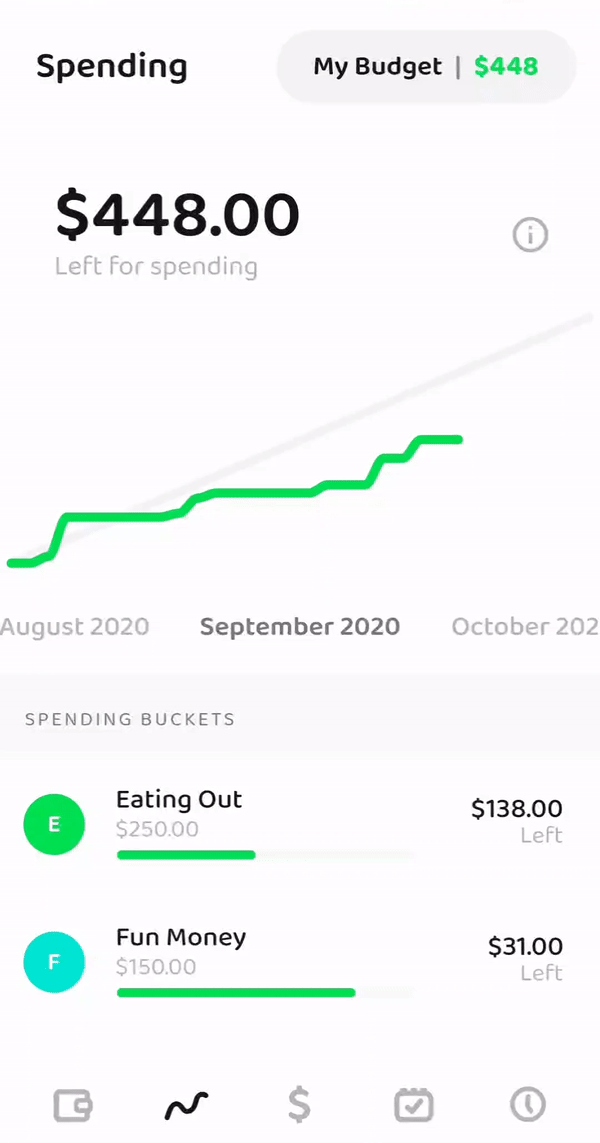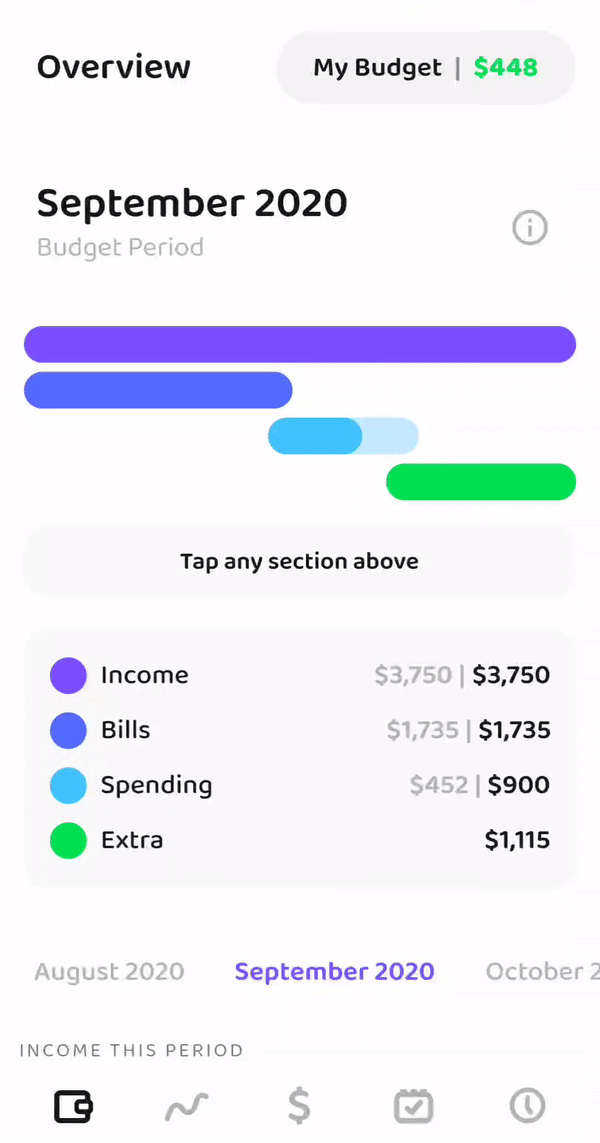Go Budget 101
February 2021
Go Budget’s budgeting philosophy is pretty simple:
As you enter purchases and mark bills paid, Go Budget will show you a few simple but handy insights about where you stand within your budget for the current budgeting period.
 Tap and drag on the chart to see a super helpful insight - how much you’ve spent at a given point so far (the point on
the
green line) vs. how much your budget divided daily would allow (the point on the grey line). If the right end of the
green line is
below the grey line, you are under budget as of the current day..
Tap and drag on the chart to see a super helpful insight - how much you’ve spent at a given point so far (the point on
the
green line) vs. how much your budget divided daily would allow (the point on the grey line). If the right end of the
green line is
below the grey line, you are under budget as of the current day..

- 1. Start with your income
- 2. Subtract regular expenses and obligations (bills)
- 3. Split discretionary spending into a few categories and track every purchase
- 4. Try to maximize the amount leftover for savings, debts, investments, etc.
As you enter purchases and mark bills paid, Go Budget will show you a few simple but handy insights about where you stand within your budget for the current budgeting period.
Spending Tab
First, on the Spending tab, you can see how much you have left for discretionary spending overall, how much you have in each bucket, and you can also see how your current spending compares to what you have budgeted up to this point in the period.
Overview Tab
Here you can visualize several key facts about your budget.
- 1. The 4 horizontal bars, as indicated in the legend box below them, show how your bills and spending stack up to your income, and whether your budget leaves extra money for savings or not.
- 2. By tapping the second bar from the top (the bills bar), you can see what percentage of your income your bills comprise, and you can also see a pie chart with all of your bills.
- 3. Similarly, tapping the third bar (the spending bar) shows you the percent of your income taken by your spending buckets, and see a pie chart of your spending buckets.
- 4. If you tap the switch from ‘Planned’ to ‘Actual’ in the spending section, you’ll see the same breakdown but for your actual spending so far, rather than what your buckets are.
Have questions? Want to chat? Report a bug? Drop us a line at support@gobudget.io
© 2025 Go Apps LLC | Terms & Conditions | Privacy Policy